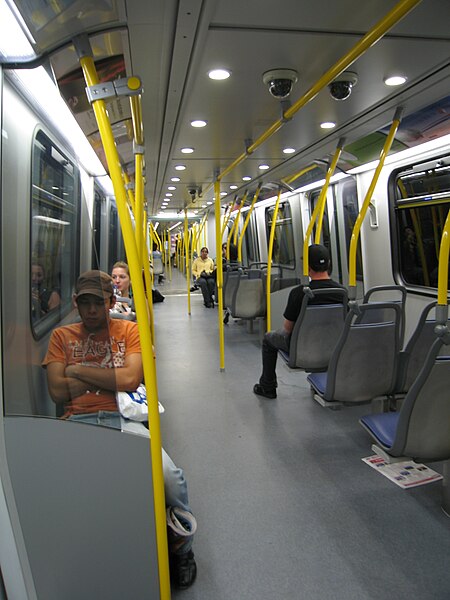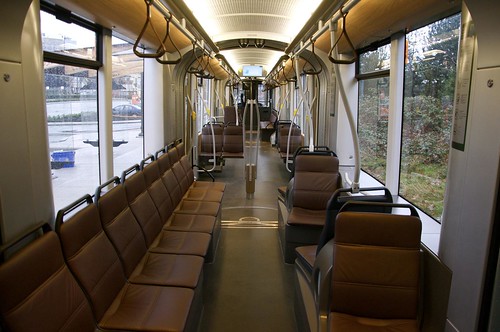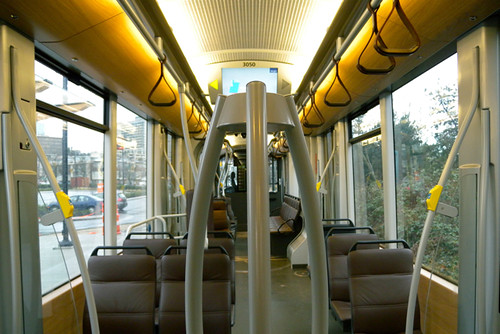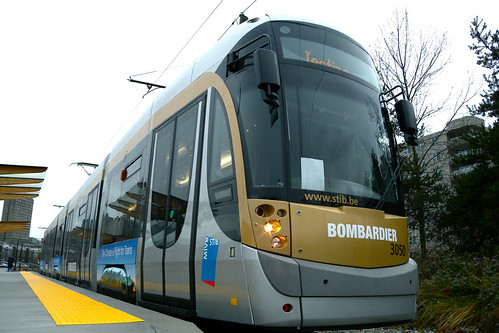ShonTron
Moderator
Member Bio
- Joined
- Apr 24, 2007
- Messages
- 13,147
- Reaction score
- 11,481
- Location
- Ward 13 - Toronto Centre
This gets me every time. Why did we have to go for low floor LRTs if we did not have any plans to use the legacy streetcar system? Look at how narrow the passageway is between the seats which has to do with the fact that the trucks are positioned underneath. The movement of passengers inside the vehicle will be terrible and the conditions will be cramped. Frankly, the section above the trucks shown in that picture is about as claustrophobic as the rear of an Orion VII bus. Had we gone for a high floor LRV like you see in Edmonton and Calgary - and along the urban, narrow streets of San Francisco - we would not have this problem.
The fact that they are 100% low floor, rather than 70% low floor that most low-floor LRVs I've rode are, bothers me, especially for the standard gauge TC fleet. It is not as if you'd be able to get a wheelchair through that space, and positioning a stroller or cart in the truck sections will create an instant blockade. Most new US LRT systems use the 70% low-floor models (such as Phoenix, Minneapolis, Salt Lake City) and at least you can use the space above the trucks better than you can. I can see why low platforms would make sense though for median light rail, so I get that part (though high-floor LRVs would have the best capacity).
As bad as the back of the Orion VIIs are, they still beat the 100% low-floor Orion VIs, which the TTC completely scrapped ahead of their lifespans. We're ending up using the equivalent of Orion VIs for our LRT network!
Last edited:












